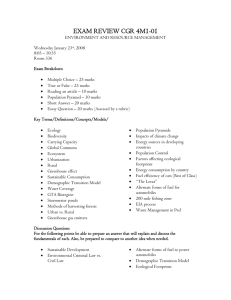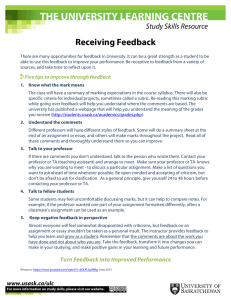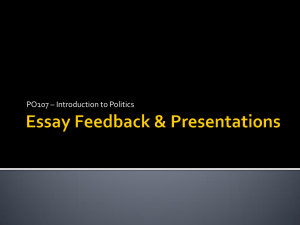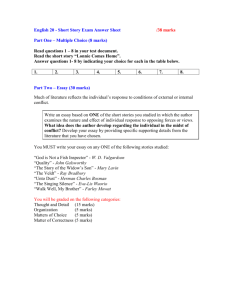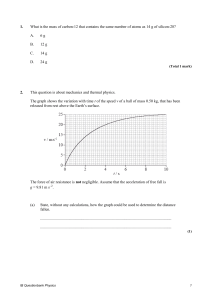EXAM REVIEW CGR 4M1-01
advertisement
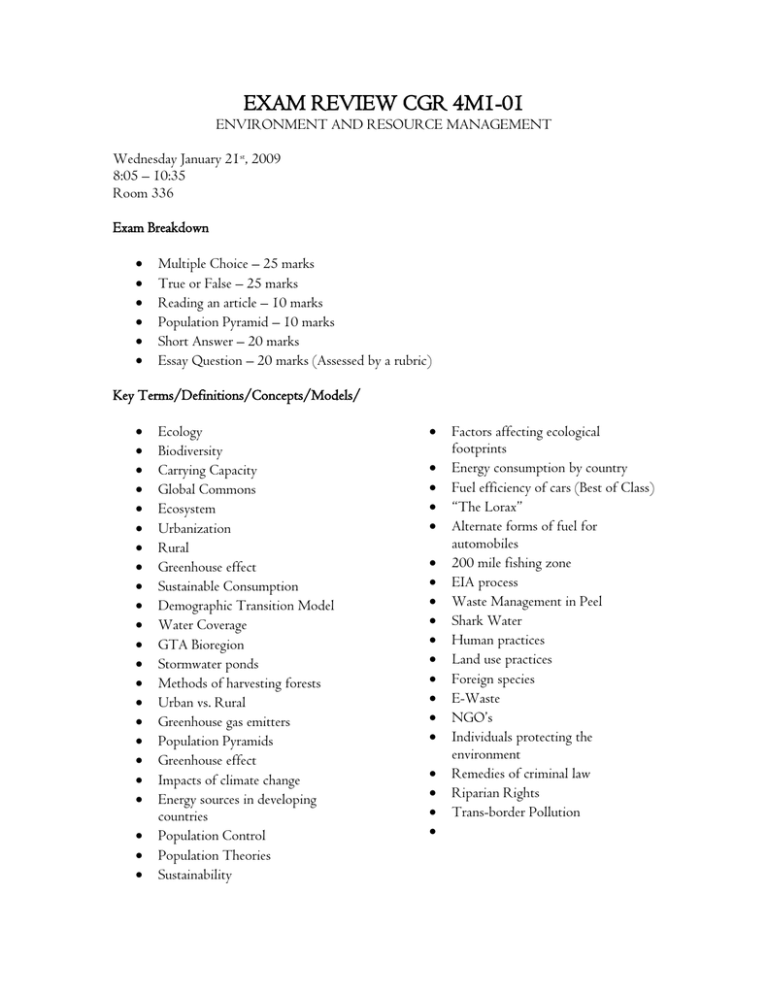
EXAM REVIEW CGR 4M1-01 ENVIRONMENT AND RESOURCE MANAGEMENT Wednesday January 21st, 2009 8:05 – 10:35 Room 336 Exam Breakdown Multiple Choice – 25 marks True or False – 25 marks Reading an article – 10 marks Population Pyramid – 10 marks Short Answer – 20 marks Essay Question – 20 marks (Assessed by a rubric) Key Terms/Definitions/Concepts/Models/ Ecology Biodiversity Carrying Capacity Global Commons Ecosystem Urbanization Rural Greenhouse effect Sustainable Consumption Demographic Transition Model Water Coverage GTA Bioregion Stormwater ponds Methods of harvesting forests Urban vs. Rural Greenhouse gas emitters Population Pyramids Greenhouse effect Impacts of climate change Energy sources in developing countries Population Control Population Theories Sustainability Factors affecting ecological footprints Energy consumption by country Fuel efficiency of cars (Best of Class) “The Lorax” Alternate forms of fuel for automobiles 200 mile fishing zone EIA process Waste Management in Peel Shark Water Human practices Land use practices Foreign species E-Waste NGO’s Individuals protecting the environment Remedies of criminal law Riparian Rights Trans-border Pollution Discussion Questions For the following points be able to prepare an answer that will explain and discuss the fundamentals of each. Also, be prepared to compare to another idea when needed. Sustainable Development Environmental Criminal Law vs. Civil Law Alternate forms of fuel to power automobiles Population Pyramids (Increasing, stable, declining) How would the above populations affect natural resource availability Demographic Transition Model Ecological Footprints Essay Topics: 1) Population Theories 2) Alternative sources of energy production in Canada 3) Fuel efficiency of automobiles and the auto industry You will be required to prepare a 5 paragraph essay to one of the following questions. Your grade will be assessed following the rubric below. ESSAY RUBRIC Categories Knowledge Total Understanding of the nature and purpose of a thesis Ability to construct key ideas using critical analysis 1 2 3 4 5 Communication Expresses ideas using concepts Organization of ideas 1 2 3 4 5 Thinking Support for ideas 1 2 3 4 5 Application Analysis of course content and strength of arguments 1 2 3 4 5
